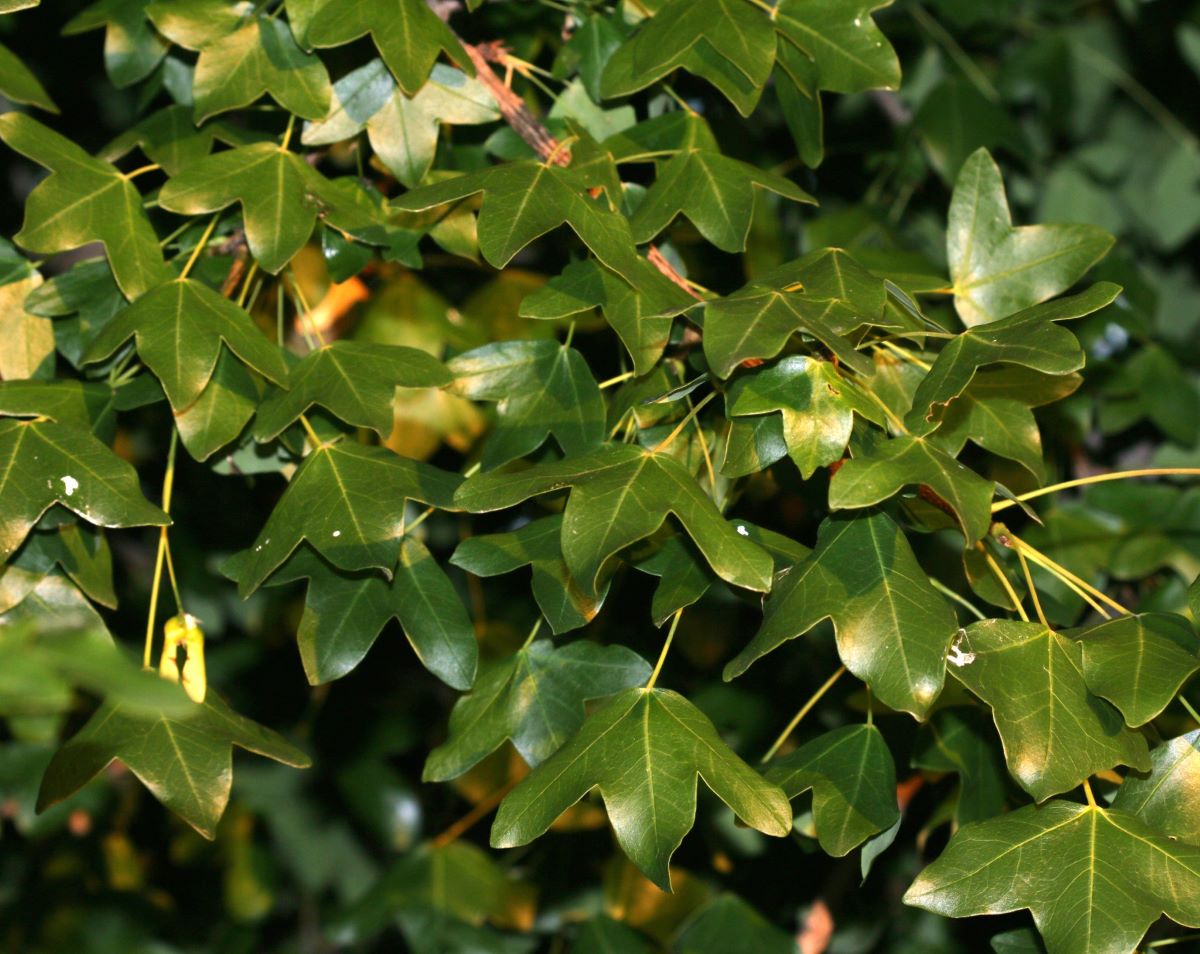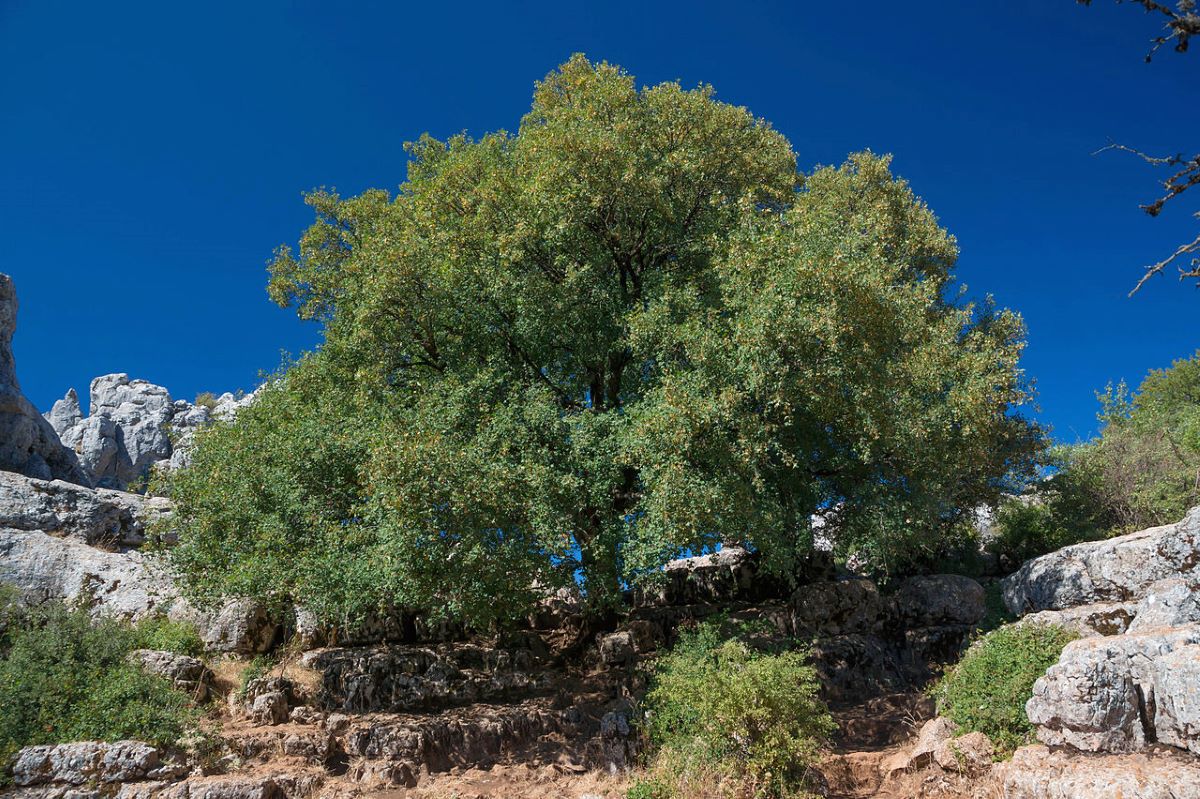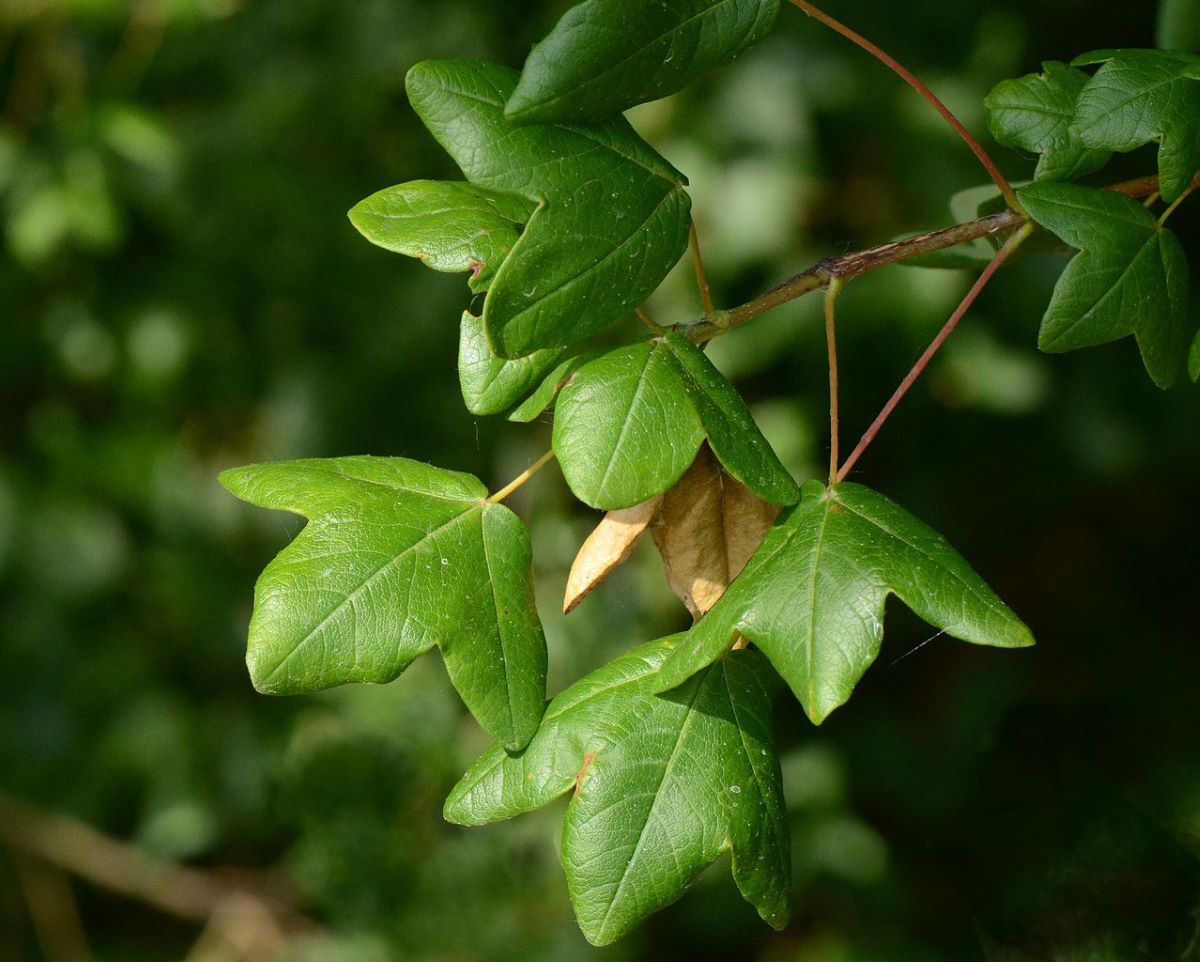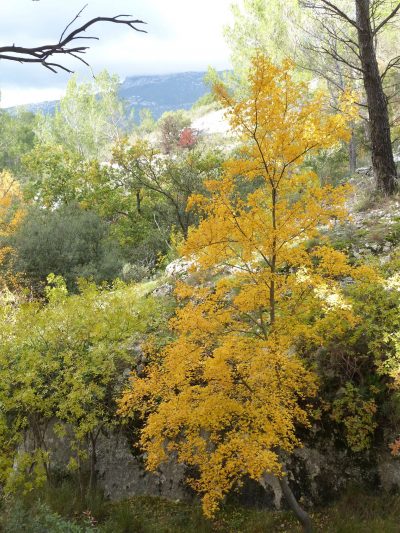
Image - Flickr / S. Rae
It is one of the maples that we can enjoy in the forests and fields of southern Europe, and therefore, one of the ones that lives best in places where the climate is temperate but with hot summers. The Montpelier maple, whose scientific name is Acer monspessulanum, it is a very interesting option to decorate the gardens, since we are also talking about a plant that gives good shade.
Unlike other maples, it has distinctive leaves, which stay green in spring and summer, but turn yellowish in fall before falling.
Origin and characteristics of Acer monspessulanum

Image - Wikimedia / Jebulon
The Montpelier maple is a medium-sized, deciduous tree that reaches a height of about 10 meters, although it can reach 20 meters in exceptional cases. It develops a straight trunk, whose bark is dark gray, and with a diameter that usually does not exceed 60 centimeters. It has a very branched and very dense crown. Its leaves are three-lobed, dark green, and measure up to 6 centimeters.
It flowers in spring, often when its leaves are about to bud or have already started. They are yellow and measure about 2-3 centimeters. Once they are pollinated produces fruits known as disámaras about 3 centimeters long. If you don't know what a samara is, don't worry, we'll tell you: it's a seed with a wing thanks to which it can move away from its parents with the help of the wind. And a disamara is two samaras joined by one side of the seeds.
What is the habitat of Acer monspessulanum?
If we want to see it in nature we have to know that lives in the Mediterranean region, at an altitude of between 300 and 1750 meters. We will find it in the holm oaks, oak groves and in the mixed forests. In Spain it is especially abundant in Andalusia. He also lives in Castilla y León, and in Aragón. Instead, it is absent in the archipelagos; it may be found in some gardens, but not in the natural environment.
How do you take care of yourself?
If you dare to have a Acer monspessulanum We advise you, first of all, to know what the needs of this tree are. In this way, you will be able to choose the right site for it:
Location
The Montpelier maple is a plant that must have outside. Ideally, it should be exposed to the sun from a young age, although it could also be in semi-shade as long as it was more in the sun than in the shade.
In order for it to have a normal development and not cause problems in the future, it must be planted at a distance of at least five meters from walls and walls, as well as from where we have pipes.
Soil or substrate

Image - Wikimedia / Jebulon
It is a tree that grows on limestone and siliceous soils. It is also important that it drains the water quickly, since it is a plant that does not like to have its roots waterlogged for a long time.
Although it can exceed 10 meters in height, that does not mean that it is not suitable for growing in a pot for a few years. In this case, it would be placed in one with drainage holes filled with universal substrate (for sale here).
Irrigation and fertilizer
Throughout the spring and summer you have to water it from time to time. The frequency will vary depending on the climatic conditions in our area, preventing the soil or substrate from remaining dry for a long time.
Also in those seasons we will have to pay it, since in this way we will achieve a slightly faster growth, and above all that it does not lack nutrients. As fertilizers we recommend using those of organic origin, such as manure, guano (for sale here), mulch or compost.
Multiplication
The Montpelier maple multiplies in three different ways:
- Seeds: in autumn. As soon as they finish maturing, they can be planted in pots and left outdoors. They will germinate throughout the spring.
- Aerial layering: is the fastest way. It is done in spring, and can be cut when it has already produced many roots.
- Cuttings: also in spring. But it is difficult for them to root. The use of rooting hormones (for sale here).
Pruning
Pruning is done at the end of winter, but only if necessary. The most serious mistake that is made with trees is to make drastic prunings thinking that this way they will grow faster, but that weakens them a lot. And that's not to mention that they lose their natural beauty.
In fact, the best pruning is the one that is not noticeable. Remove dry, dead, or weakened branches, yes. Thin out the ones that are getting too big, too. But what we do not recommend doing is removing thick branches, nor leaving the branches with half their original length.
Rusticity
El Acer monspessulanum withstands moderate frost very well. Holds up to -20ºC. Nor do temperatures of up to 35ºC harm it if it has water.

Image – Wikimedia/Thérèse Gaigé
What do you think of this maple?